#Maria Sibylla Merian
Text

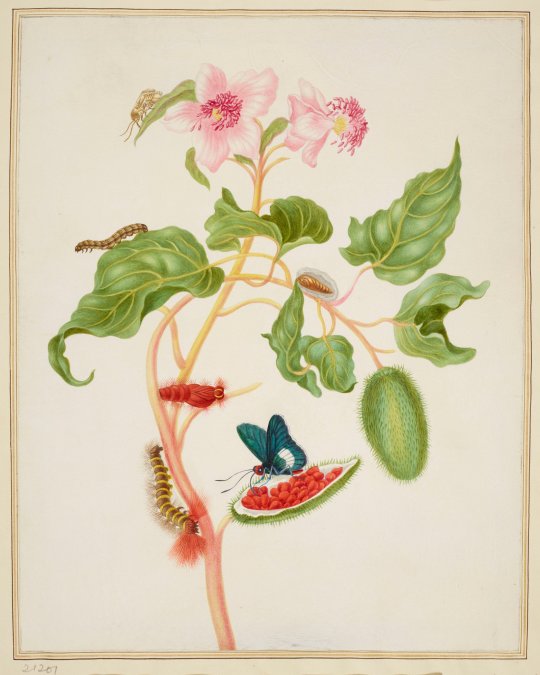

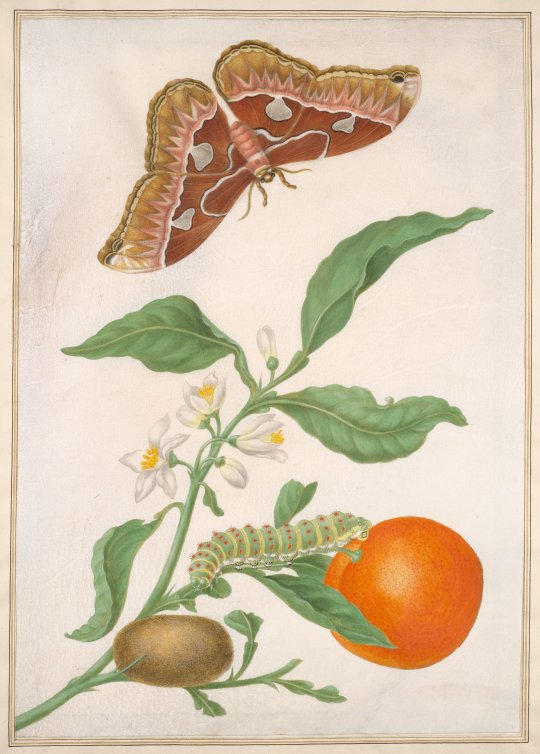




Maria Sibylla Merian (German, 1647–1717)
3K notes
·
View notes
Text
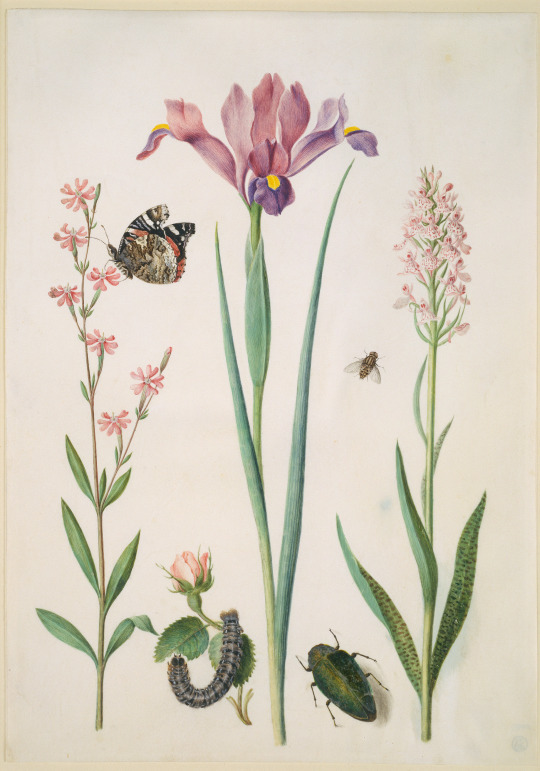
Catchfly with Red Admiral, Rose with Fox Moth, Iris, Hoverfly, Jewel Beetle and Orchid (after 1691?). Circle Maria Sibylla Merian.
Watercolour and body colour on parchment.
Image and text information courtesy Staedel Museum.
323 notes
·
View notes
Photo

Hyporicum Baxiforum with Snails and Beetle, by Maria Sibylla Merian
1K notes
·
View notes
Text

Untitled painted by Maria Sibylla Merian (1647 - 1717)
#art#art history#artwork#painting#museums#history#culture#vintage#flowers#floral#plants#maria sibylla merian
262 notes
·
View notes
Photo
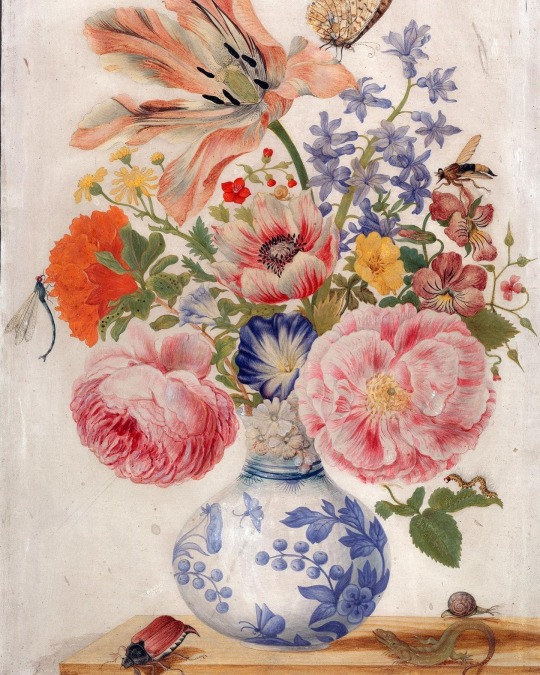
Maria Sibylla Merian (German/Swiss, 1647-1717)
Chinese Vase with Roses, Poppies and Carnations, c. 1670–1680
Ink and colour on parchment
355 notes
·
View notes
Text

Maria Sibylla Merian, Castor Oil Plant with Ricini Longwing Butterfly, 1702-03.
Watercolour and bodycolour with gum arabic over lightly etched outlines on vellum.
Royal Collection Trust
#Maria Sibylla Merian#painting#art#fine art#botanical art#butterfly#Ricini Longwing Butterfly#Castor Oil Plant#oil plant#botanical#flora#floral#Ricinus communis#Heliconius ricini#flower painting#1702#1700s
87 notes
·
View notes
Text
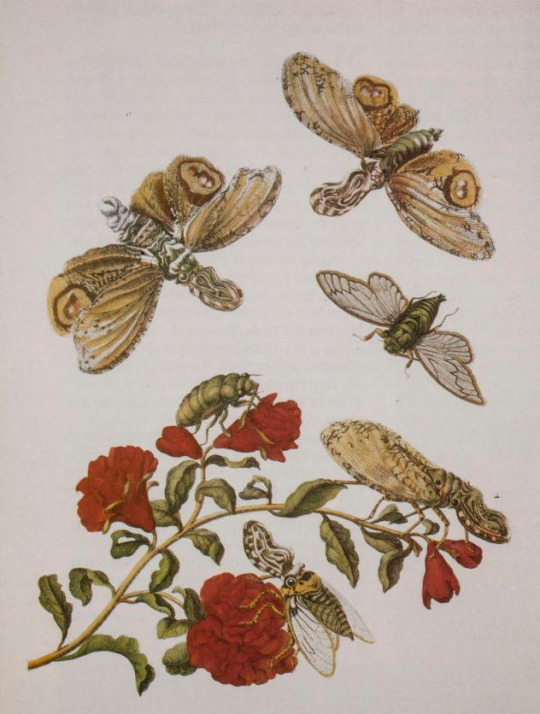
Lantern bugs and cicadas, from Madam Merian's Metamorphosis Insectorum Surinamensium, 1705. Terra: The Member's Magazine of The Natural History Museum of Los Angeles County. Vol 23, No. 6. July/August 1985.
Internet Archive
279 notes
·
View notes
Text
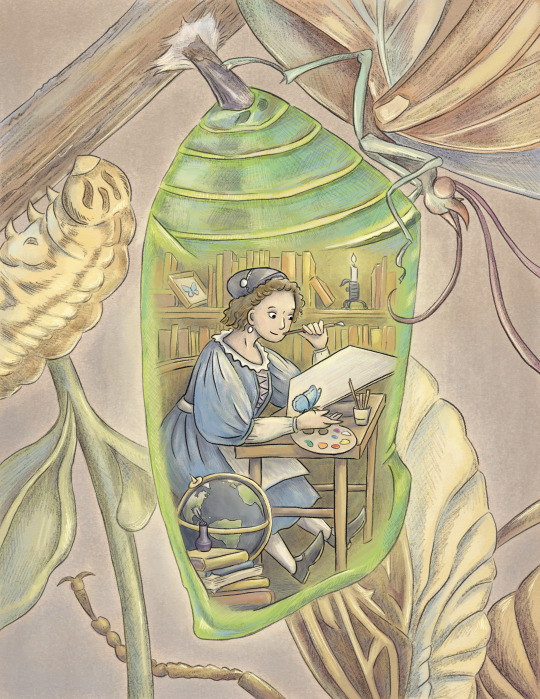
A portrait of Maria Sibylla Merian, 17th century German painter and pioneer of entomology. Best known for her carefully studied illustrations of insect life cycles, and for her self-funded scientific expedition to Surinam in 1699. She also joined a Christian doomsday cult in order to dump her husband (it was hard to get a divorce back then)
26 notes
·
View notes
Photo
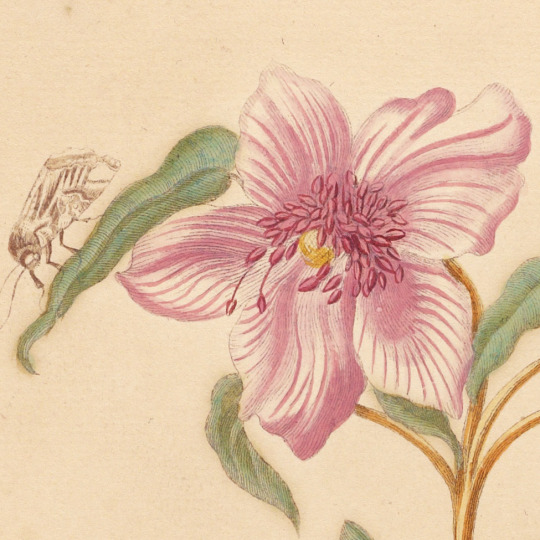
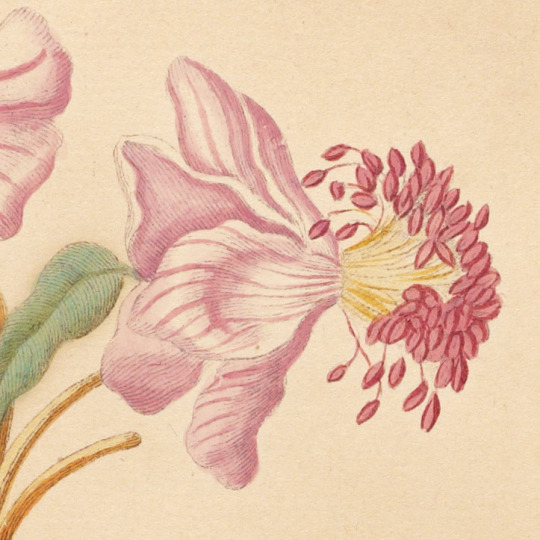
The Rocu Tree with Caterpillars, Moths, and Butterflies (detail),
Maria Sibylla Merian (German, 1647 - 1717)
823 notes
·
View notes
Text
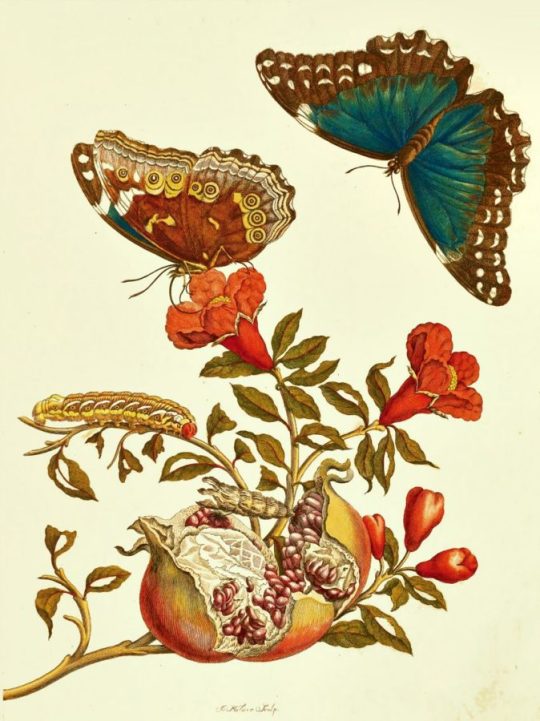
Maria Sibylla Merian (German, 1647-1717) • Pomegranate with Blue Morpho Butterflies and Banded Sphinx Moth Caterpillar • Illuminated Copper engraving from Metamorphosis insectorum Surinamensium, Plate IX by Maria Sibylla Merian • 1705
German entomologist, naturalist and scientific illustrator. She was one of the earliest European naturalists to document observations about insects directly. – Wikipedia
#art#painting#still life#fine art#art history#scientific drawing#maria sibylla merian#woman scientist#golden age entomologist#17th century naturalist#woman artist#german artist#drawing#naturalist#art of the still life blog#copper engraving#colored engraving#engraving#entomologic illustration
29 notes
·
View notes
Text
Maria Sibylla Merian was born #OTD (German, 2 Apr 1647 – 13 Jan 1717).
Here are a few of her works that were recently on display at the “Making Her Mark: A History of Women Art in Europe, 1400-1800” exhibition at Baltimore Museum of Art :


1. “Pineapple with Cockroaches” in Dissertatio de Generatione et Metamorphosibus Insectorum Surinamensium... (Dissertation on the generations and metamorphosis of Surinamese insects), 1719
Bound volume of hand-colored engravings and etchings
“This ripening pineapple's sweet aroma attracts a swarm of cockroaches. Maria Sibylla Merian observed this interaction during a three-year, self-financed voyage with her daughter Dorothea Maria to the South American country of Suriname, then a Dutch colony, in 1699. While there, Merian studied the native plant and insect life, learning their uses and behavior from enslaved African and Indigenous guides working at the sugar plantation where she stayed. In her notes, Merian characterized the pineapple as "the most outstanding of all edible fruits" and cockroaches as "the most infamous of all insects in America."
Merian's illustrations innovatively presented insect life cycles, habitats, and the broader ecological dynamic. After returning to the Netherlands, Merian published an illustrated compilation, creating one of the most important natural history publications of the time.
Her daughters Dorothea Maria Graff and Johanna Helena Herolt-Graff continued to issue editions after Merian's death, such as this deluxe version, contributing to their mother's foundational reputation in entomology.”

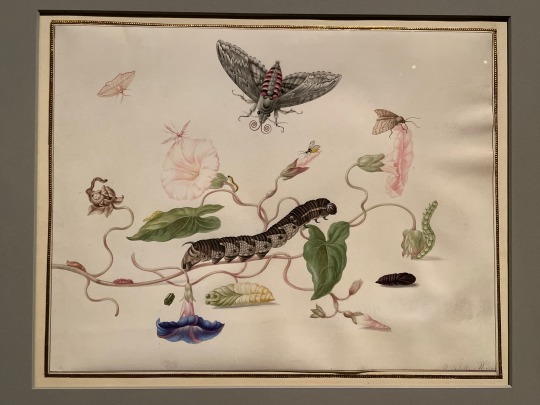
2. Frontispiece of Der Raupen wunderbare Verwandelung und sonderbare Blumen-Nahrung (The Wondrous Transformation of Caterpillars and their Curious Diet of Flowers), 1679-83
Bound volume w/ hand colored engraved illustrations
3. Convolvulus and Metamorphosis of the Convolvulus Hawk Moth, c.1670-1683
Watercolor w/ touches of opaque watercolor over indications in black chalk or graphite on vellum
“Maria Sibylla Merian had a close relationship with caterpillars, rearing them from egg to adult in her home over a decade. This engaging illustration of the life cycle of the convolvulus hawk moth on the wall above is the result of her sustained observations and her exceptional artistic talent. Creating an intertwined vignette of insect and plant life, Merian constructed a life cycle image that became a standard in scientific illustration and shaped the field of entomology. Her findings and illustrations contributed to a foundational reference text on insect metamorphosis, Der Raupen wunderbare Verwandlung und sonderbare Blumen-Nahrung, on display here.”
#animals in art#european art#museum visit#exhibition#Baltimore Museum of Art#Maria Sibylla Merian#women artists#women in science#women in STEM#book plate#frontispiece#watercolor#scientific illustration#natural history art#entomology#botany#caterpillars#butterflies#moths#lepidoptera#17th century art#metamorphosis#colonial art
10 notes
·
View notes
Text
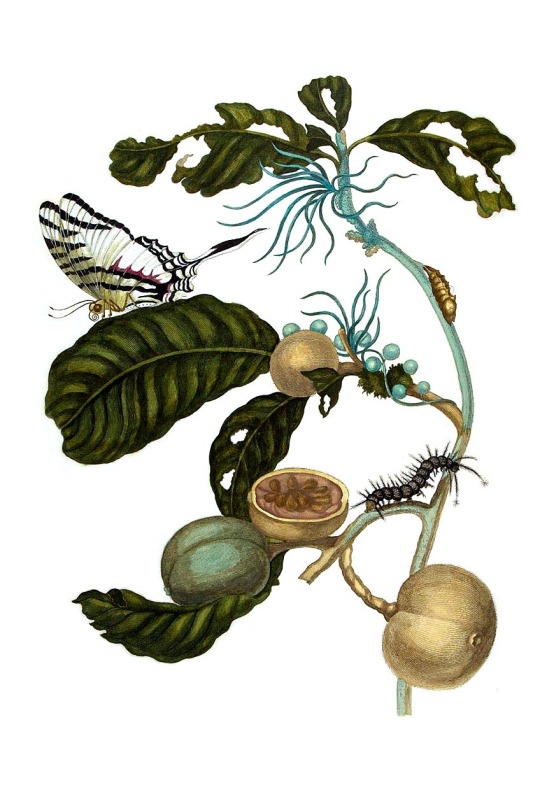
Maria Sibylla Merian
Duroia eriopila
1705
#maria sibylla merian#botanical illustration#entymology#plants#insects#naturalist art#science#nature#wildlife#natural world#women artists#women illustrators#18th century art#tumblrstyle#tumblr art#tumblrpictures#tumblrpic#tumblraesthetic#aesthetictumblr#tumblrposts
22 notes
·
View notes
Photo
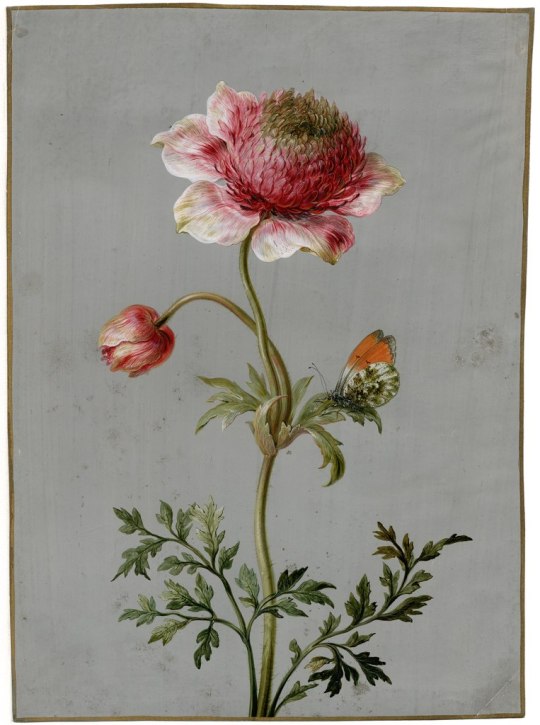
Anemone with butterfly (date unknown) by Maria Sibylla Merian (1647-1717).
Universitaire Bibliotheken Leiden.
This file is licensed under the Creative Commons Attribution 4.0 International license. Wikimedia.
315 notes
·
View notes
Text
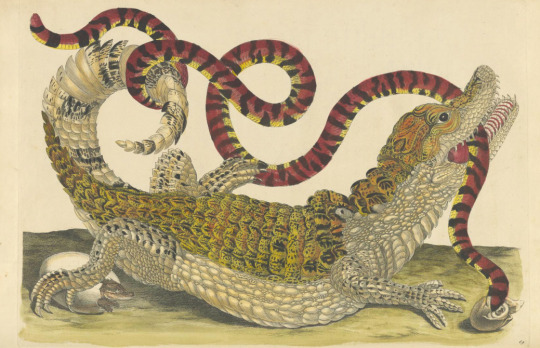
Did you know that the German nature painter Maria Sibylla Merian (1647–1717), who was an insect fanatic, laid the foundations of modern zoology with fantastic illustrations of more than 200 insect species?
Have you heard of the English paper collagist Mary Delany (1700–1788), postwar Japanese photographer Ishiuchi Miyako (b. 1947), and Venezuelan Minimalist Gego (Gertrud Goldschmidt, 1912–1994)?
After reading Katy Hessel’s The Story of Art Without Men, several educators may aspire to redesign their art history surveys and syllabi — and perhaps trade some Picassos or Pollocks for Merians and Gegos.
43 notes
·
View notes
Text
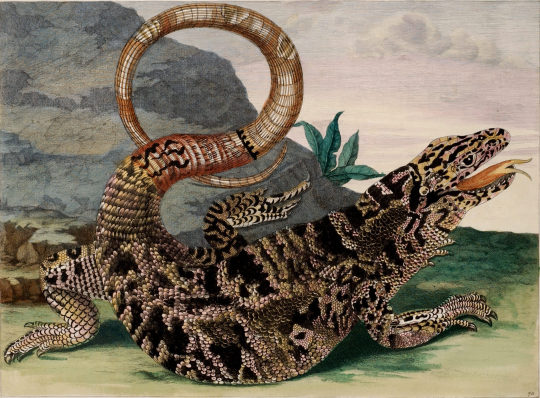
Maria Sibylla Merian, Plate 70 (from "Dissertation in Insect Generations and Metamorphosis in Surinam", second edition), 1719; Hand-colored engraving on paper, 14 1/2 x 20 1/2 in.; National Museum of Women in the Arts, Gift of Wallace and Wilhelmina Holladay
5 notes
·
View notes
Photo

Maria Sibylla Merian (German, 1647-1717): Plate 47 from Dissertation in Insect Generations and Metamorphosis in Surinam (1719) (via NMWA)
#Maria Sibylla Merian#early women artists#early women painters#women artists#women painters#art#painting#illustration#insects#eighteenth century
131 notes
·
View notes